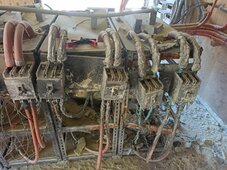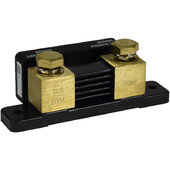Got a call Sunday from the wife about smoke coming from the garage and fire trucks were already on the way.
After they had there fun spraying many cans all over the garage I got to have a look inside.
I have 5 rows of shelves with 2 shelves for in each with a battery and then busbar along the top for interconnecting everything.
I had each battery on a 300a shunt, looks like my failure was the shunt actually snapped right in half, then probably made contact with the wood underneath/metal frame and looks like shelf collapsed onto the bottom battery and probably 10 cells let off the smoke/burned .
Definitely should have had a fire alarm in the garage hooked in with the house.
And should have mounted the back of the shunts on isolators.
I tried braking the other shunts but couldn't get any to give think it was just a defective one.
After they had there fun spraying many cans all over the garage I got to have a look inside.
I have 5 rows of shelves with 2 shelves for in each with a battery and then busbar along the top for interconnecting everything.
I had each battery on a 300a shunt, looks like my failure was the shunt actually snapped right in half, then probably made contact with the wood underneath/metal frame and looks like shelf collapsed onto the bottom battery and probably 10 cells let off the smoke/burned .
Definitely should have had a fire alarm in the garage hooked in with the house.
And should have mounted the back of the shunts on isolators.
I tried braking the other shunts but couldn't get any to give think it was just a defective one.












